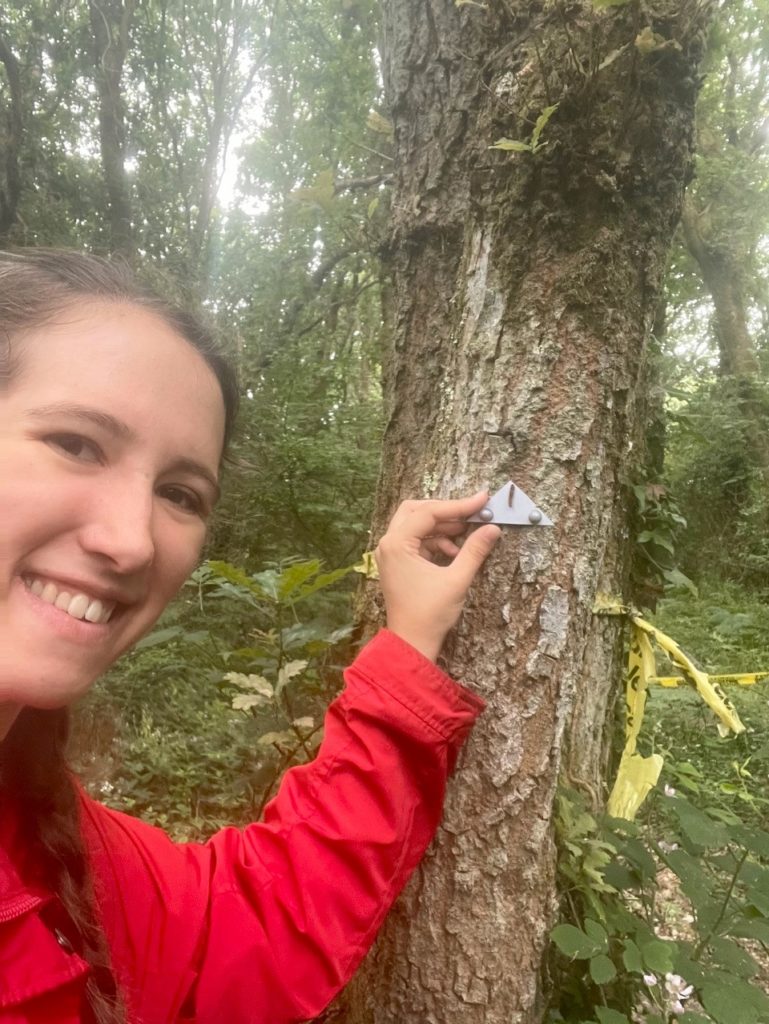Hello everyone! My name’s Indigo Pai-Gibson and I’m in my Second Year studying MSci Zoology at the University of Exeter’s Penryn Campus in Cornwall. I was recently lucky enough to secure a paid internship opportunity through the Career Zone’s Access to Internships (A2I) scheme.

However, my A2I journey was far from ordinary. I first heard about A2I’s support scheme from one of my friends. At the time, she had already arranged her internship, applied for A2I funding, and started her 140-hour placement. She was thrilled to be doing what she loved as work; for her efforts to be recognised, respected, and rewarded with a proper wage. She told me what I know now to be true: the A2I scheme is a real game-changer, a gateway to pursuing your passions in the professional sphere. However, by the time I learnt this, A2I applications were already closed for the academic year.
Flash forwards a couple of months, I next heard about the A2I scheme from a research fellow at the University. She let me know that I’d be eligible for the scheme and that I should think about applying next academic year. After discussing further details, we decided to get in touch with the A2I team. Serendipitously, the A2I team were able to locate some unused funding for our research project and we were able to start fieldwork within two months of our enquiry! When I heard the news, I was overjoyed and extremely grateful to have been granted such a unique opportunity.
‘The A2I team were able to locate some unused funding for our research project… When I heard the news, I was overjoyed and extremely grateful to have been granted such a unique opportunity.’
Our research focus was on determining the efficacy of lepidopteran eyespot patterning as an anti-predator deterrent for avian predators. This sounds rather sophisticated, but the research method for our project was actually relatively simple.
First, I crafted various stimuli to imitate Lepidoptera (moths and butterflies) since no actual lepidopterans were used in our experiments. Furthermore, each stimulus type displayed a different form of anti-predator eyespot. For example, some models had eyespots that were two-dimensional, whereas others were three-dimensional. Then, each stimulus had a mealworm attached to it, emulating the body of the Lepidoptera model. This way, we could assess the level of predation the stimulus received and from what predator.
I want to thank the A2I scheme once again for giving me the chance to do something so special. ‘This internship has been an invaluable experience that has helped shaped my career aspirations and given me the tools I need to access the world of research.’
Next, I pinned the stimuli to different trees along a transect at our research site and monitored the stimuli at regular time intervals over a few days. Lastly, I recorded the patterns of predation that the stimuli received during the experiment. Thus, over the month of June, I constructed hundreds of stimuli and recorded if, when and how they were predated. It was an incredibly special experience. I really enjoyed learning more about how researchers conduct hands-on fieldwork research and how we investigate our local fauna non-invasively. Moreover, I was very fortunate to have been blessed with beautiful weather, a gorgeous local forest in Perranarworthal as my research site and plenty of wild woodland animals to keep me company. From small critters (like black arches moths and dor beetles) to large fauna (like deer jumping out from behind bushes), there was never a dull moment!
I want to thank the A2I scheme once again for giving me the chance to do something so special. This internship has been an invaluable experience that has helped shaped my career aspirations and given me the tools I need to access the world of research. I loved taking on the responsibility of running experiments independently and seeing the theory I had learnt in lectures come to life in the field. This experience bolstered my passion for research and helped me confirm that I’d be happy to be a researcher full-time. The main message of my A2I journey is to give it a go! There’s no harm in asking and you never know what doors a single conversation can open for you ?
Applications for A2I funding are open now, and close once all funding is allocated. The A2I scheme is open to current undergraduate students who meet the widening participation criteria. If you are unsure if you are eligible to take part in the scheme, please contact a2i@exeter.ac.uk
